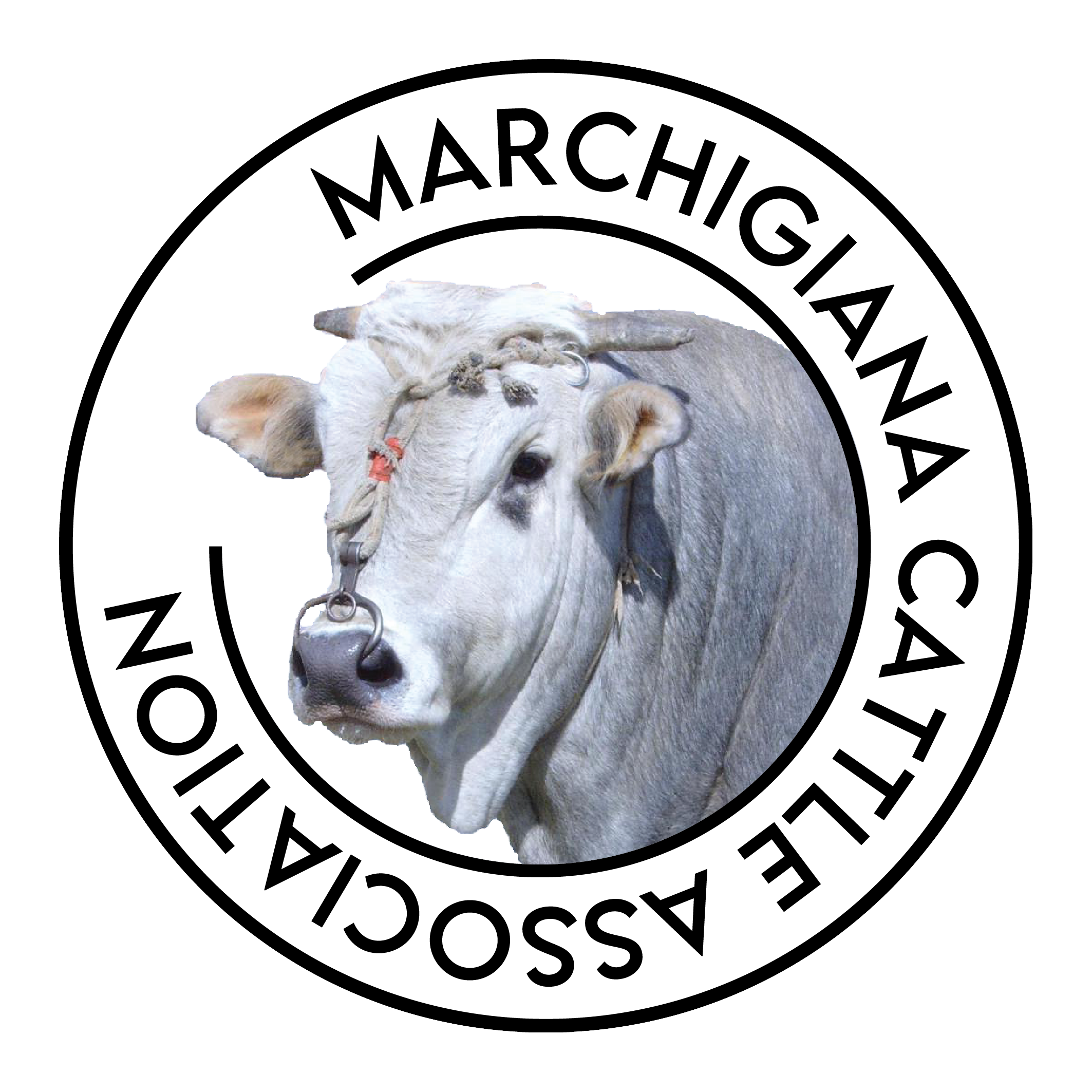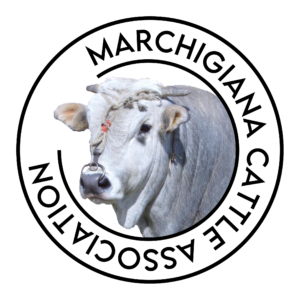THE MARCHIGIANA BREED
ORIGIN AND SPREAD
The Marchigiana breed derived from the long-horned cattle that reached Italy in the sixth century AD following the barbarian invasions.
Today, this breed has lost many of its original somatic traits and can be defined as a "synthetic" beef cattle breed created in Italy.
During the second half of the nineteenth century, breeders from the Marches region had Chianina bulls mount their dams in order to improve the beef-production capacity of these work animals. The results were soon evident and not only did muscle development improve, but the coat became lighter, the horns shorter and the head lighter.
In these subjects, known as "short-horns", this capacity improved significantly, but the increase in stature made the oxen unsuitable for working on the hilly and sub- mountain areas of the Marches. Therefore, at the beginning of the twentieth century, widespread cross-breeding with Romagnola bulls was performed in order to decrease stature and improve the structure of the breed. However, following all this cross-breeding, which was done without any precise indications, Marchigiana cattle looked more like a population than a true breed. For this reason, a decision was made in 1932 to stop any type of cross-breeding and to proceed with improving the breed through selection conducted according to directives that entailed listing in herd books.
This breed has succeeded in earning itself an important niche, starting right from its very origins. In fact, the breed has spread from the Marches area throughout all of central Italy, even going as far as the southern regions. As of the Seventies, the Marchigiana breed has also been exported to various countries including the United States, Canada, Brazil, Argentina, Great Britain and Australia. Now, countries in northern Europe are also starting to discover the potential offered by this breed, which seems to have gained favor particularly among Dutch breeders.
EVOLUTION AND SELECTION
The evolution of the Marchigiana breed into a beef-cattle type has been progressive and significant. Its stature has been decreased, its transverse diameters have been accentuated to a greater extent, its length has been increased and the legs and head have become lighter. This implies an important increase in yield at slaughter, which can be certified at around 66 - 67% in bullocks. The area of the longissimus dorsi muscle has increased, together with the increased percentage weight of edible parts. Beef quality is excellent, with a rosy color, fine grain and just the right amount of marbling.
Improvement and selection work began on the Marchigiana at the same time as cross- breeding with Chianina and Romagnola bulls was abandoned definitively. Research within the population to find subjects that were best suited for the beef-producing capacity, has conditioned the evolution of this breed towards the ultramodern and functional stereotype we are familiar with today. Well-pronounced muscle development, a long trunk, accentuated transverse diameters, fine bone structure and skin, have now become a constant for this breed, making it extremely consistent with market requirements.
The breed is now selected on the basis of growth capacity, muscle development, estimated slaughter and carcass yield.















